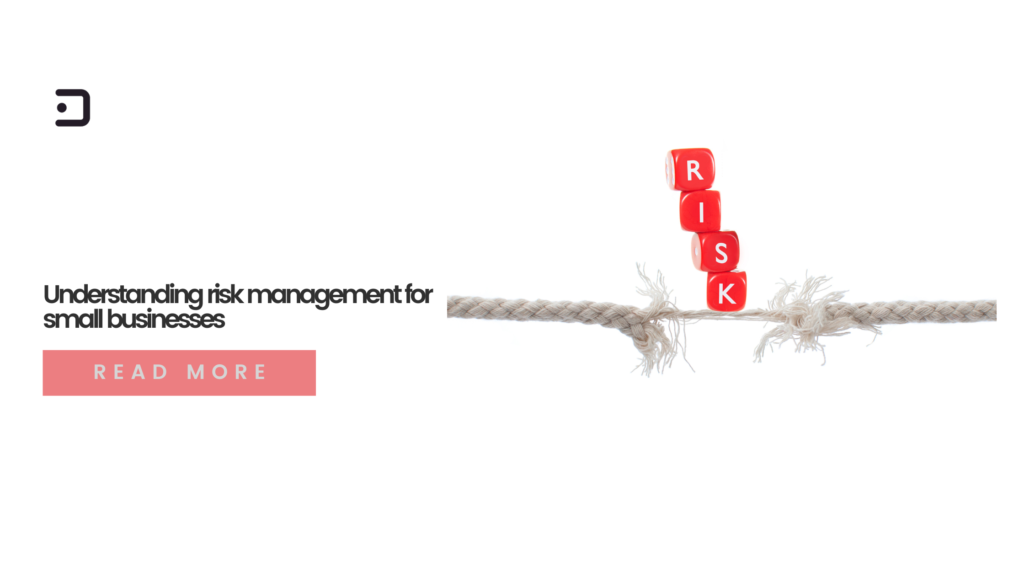
When running a small business, your key job is to make money. But at the same time, you also have to consider how to protect what you already have from anything that could cause loss. This is where risk management comes into play. In short, risk management for small businesses consists of identifying what the risks are to your business and then figuring out ways to mitigate them. This article walks you through the basics of risk management for small businesses.
First, we need to define what a business risk is.
A risk is something that has an impact on how profitably a small business can operate. The business might be forced to shut down if the risks are too much.
The two main categories of risks are pure risks and speculative risks.
Pure risks are occurrences that a business cannot control. Fires, natural disasters, and vandalism are examples of pure risks.
Speculative risks are voluntarily made business decisions that could bring in a profit or a loss. Examples of speculative risk include growing a business into a new area or investing money in a business venture.
Small business owners and their insurance providers typically refer to pure risks when talking about risk management. The business owner or leadership team is more often concerned with speculative risks.
What are the common risks for small businesses?
The following are the most typical risks that small businesses are most likely to experience:
- Financial Risk.
The way your company manages its finances has an impact on your financial risks.
- Operational Risks.
Operational risks are caused by internal flaws. That is, an unanticipated failure of internal business systems, personnel, or processes.
- Reputational Risk.
Your reputation is everything, regardless of the industry you work in. If the reputation of your business is damaged, clients will stop doing business with you, which will lead to a reduction in revenue.
- Compliance Risk.
Risks related to compliance are those that fall under the purview of laws and regulations. These could be laws governing employee safety, environmental safety, or even regional and local governing bodies.
What is the risk management process for small businesses?
Business risk management is a thorough perspective on identifying and managing risks. Here’s what it entails:
- Recognizing your risks Understanding the numerous threats your company faces, such as property losses, business interruption, liability claims, and employee work injuries, is crucial.
- Identifying your risk exposure: Consider each risk’s likelihood of occurring and potential financial impact.
- Creating risk-mitigation strategies: Outline actions to help mitigate risk or lessen the likelihood that it will result in a damaging incident.
- Purchasing insurance: It’s critical for small business owners to fully utilize insurance to help them manage the financial effects of a loss.
- Updating your risk management strategy: Once you’ve established a risk management strategy, it’s crucial to check in on it roughly every six months to make sure it’s still relevant.
How to manage risks more effectively in your small business.
The greatest risk of all is taking none at all. From learning to drive a car to attempting a new dish, everything carries some level of risk. Owning a small business means taking risks, some of which may come as a surprise.
Small business risk reduction techniques typically fall into the following groups:
- Avoid the risk. This entails making adjustments to your business so that the risk is eliminated. For instance, construction companies may suspend operations until the weather is better in order to prevent accidents.
- Control the risk. While the risk is not eliminated, its potential impact on your company is lessened as a result. As an illustration, you could teach your customer-facing employees soft skills to lower the likelihood of poor customer service.
- Accept the risk. Pre-budgeting for risk or creating a backup plan are both examples of accepting risk. As an example, consider how a supermarket budgets for shoplifting losses in its profit and loss statement.
- Share the risk. There are straightforward ways to transfer some of your risks to an agreeable third party. This might entail contracting out some of your work or obtaining business insurance.
As a result of categorizing your risks, you can decide which risk mitigation strategy is most appropriate for the level of threat that each risk presents.
In conclusion:
By keeping track of your incoming and outgoing cash, you can monitor financial risks. Dukka makes it easy to spot threats with features like account reconciliation, invoice payment reminders, and more. Download it for free today!
…………………………………………………………………………………………………………………………………………………………………………………………………
About Dukka
Dukka is a leading bookkeeping and payments app. We provide solutions for bookkeeping, payments, cash flow management, and access to finance for small businesses in Africa. We are building an OS for commerce for African merchants.
To learn more about what Dukka is doing or to have a general chat, visit Dukka.com.



